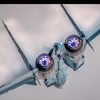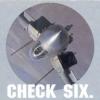-
Posts
1,074 -
Joined
-
Last visited
-
Days Won
23
Eagle114th last won the day on August 27
Eagle114th had the most liked content!
Eagle114th's Achievements
-
Hello everyone! It have been tricky work solving the bugs that aused some of messy output, like __s, __f__f, etc... It is now fixed, so there should be proper output for tokens / strings from Enum tables. I have completed the work on all DLLs in FLIGHT folder. I am half way done with CORE folder, still have another 2 folders to go through (MENU and OBJECTS). I would like to share the completed FLIGHT, while waiting for another folders. FLIGHT.zip I would like feedback on this project too, please. Cheers
-
Hello everyone! I have been hard at work on Ghidra and script, as well improving the workflowa of not just mining through DLL, also to improve every ways I can do with techniques to extract Enum / tables and number values hidden in the various hexadecimal in DLL files. I also have been working on figuring out how to automate the progress, got about 90 percent workflow automated while the rest requires AI assistant. For example, after using RTTI technique to restore the original classes / functions names as possible, it is often that about 25 to 40 percent of classes / functions, while the rest is shown as FUN_(Hex number) as generic , unknown function names. To solve this the quick way, I had AI parsing through the whole dump codes, and determine the possible closest name they could have been, based on teh contests of the codes it had. I do not have the time to further research how to restore the function names, it could take much longer time. So by using this method, it helps both human and AI to go through the dump for any information. However, the dump files, this time, now have decoded Enum / table and numeric values, as well separated file that have the list of them. For example, for Avioinics60 and 70, this is where the tokens were hidden in. Here is samples of Avionics60 and 70. NOTE: Go to "DUMP FILES' in both Avionics 60 and Avionics 70, and you will see the following files: (FILE REMOVED, I will post the full version in 2nd post) - DUMP_CLASS_FUNC_FULL CODES.txt - DUMP_CLASS_FUNC_FULL CODES - EXTENDED.txt - SF2_ENUM_TABLE_DAT_NUM_LIST - CMODDER.txt CLASS_FUNC_FULL CODES are for people to look through the dump. CLASS_FUNC_FULL CODES. - EXTENDED, in other hand, are designed for AI to parse through with more details. SF2_ENUM_TABLE_DAT_NUM_LIST - CMODDER have a full list of decoded Enum / table and numeric values (_DAT numbers). I am currently re-working on all DLLs to have up to date DUMP files, as well the list of decoded Enum / tables and numeric values. These two weeks of hard work paid off, and as stated, with semi-automate workflow, I am happy with the progress. It appear that, the more I work with this project, the more I learn how to extract the information and making the dump much more readable compared to before. Eagle114th
-
Hello everyone, this is quite wild found, I ama not even sure if all is actualy implemented or is placeholder.. Here is "TYPE" tokens: By the way, I am just so surprised to see these tokens like: Oh boy, for now i am putting INI guidance library on hold. I am still researching and figuring out how to restore the 'undefined' classes / funcitons / methods, variables, and values back to the decompiled codes, so it have defined codes like before it was compiled. At least I am able to decode the stored tokens and numberid values in the hexadecimals address. Eagle114th
-
Hello everyone! I made another discovdered, after realizing that _DAT_ (Hexadecimal numbers) also contains the hidden values (numbers) What I learned is that the enum / tables contins the tokens of text while _DAT_ hold sthe numberic values. NOTE: Tere is list of numberic values (You'llsee ???, they are for now.) Here is the file: SF2_ALL_DAT_FLOATS_v1.txt This notes is WIP, but check what I have so far: SF2_TOKENS_Enums_Allowed_Values.txt Check the ArmorMaterial Enum,it explains the protection system for each armor types. Eagle114th
-
Hello everyone, I have made aa major breakthrough reaching the core of the DLL; When I started with the dump, I was able to extract the "STRING", but the values (Example. INI Speed), esum, tables, and other aspect of the codes remains hidden in the hexadecimal address. For example, the token for the cockpit (TYPE), DefaultArmorType= TOKEN, and other token, I could NOT find them besides "STIRNG". I was puzzled for a while, as I was working through the dump file , generating the INI guidance library, as well the manuals for modders. Then by 'accident', the AI revealed to me that they were able to find token within the hexadecimals through wcscmp / strcmp / switches and showed me some steps how it worked. That is when I get lightbulb moment, realized I should be tracking further where the token could be. That is where i spent hours working on scripts of Ghidra to extract most, if not all the esum, as well other types of the tables, then I was shocked by the result: Not only I get massive list of the decoded tokens, I also extracted the Key, sections, etc.. that is beyond the "STRING". This is where I realized how this work; When compiling the codes (Source codes), all codes always get compiled into memory of the files it is compiled in, which contains the locations as well the codes it was entered as (INI NAME, Function name, tokens, etc...) into hexadecimal address. The only thing that remains preserved is "STRING". So therefore, when decompiling the codes, we see unnamed values, functions, methods, even classes. By using RTTI techniques, I am able to restore lot of unnamed classes / functions, methods, and values, but not all of them. Now that I realize, all of hidden names of everything resides inside the hexadecimals. Here is massive list of the names / tokens found and decoded from the hexadecimal address. Keep in mind, this is chaos for now, because it is extracted based on function it is tied to. I am currently cleaning it up and extract ing the relevant tokens / strings for INI modding guidance library and manuals. (Aircraft Objects DLL) SF2_ENUM_MINER_MAX.txt Cheers
-
Hello everyone! I am still workin gon the 3 manuals (Aircraftdata related) which is nearly completed: Structural & Damage model - Effects & Lights - Ordinances As soon I complete it, I plan working on AIRCRAFTOBJECT.INI found in Aircraft Objects DLL too. After that, I am looking into both flight engine.ini and mission / campaign ini to extract more information for INI modding guidance. Cheers!
-
Hello everyone! I am very happy that i am finally able to release SF2 INI Modding Guidance Library v1.0. The flight model mini books, plus the pocket course is now completed. I am currently working on the next aspect of aircraft data.ini editing: - Structural & Damage Model - Ordinances (Guns, Turret guns, weapons, fuel tanks, ECM, etc..) - Effects & Lights I would like feedback on the flight model manuals please. The file can be found on my 2nd post in this thread, here is the link: https://combatace.com/forums/topic/100023-sf2-advanced-moddings-dll-files-editing/#findComment-821849 Look for SF2 INI Modding Guidance Library v1.0 NOTE: I just realized I forgot to clean 'left over' files. Ther are WIP folders. I realied it's okay to leave it there for now. WHen they are compelted, the next version will have compelted Structural & Damage Model, Effects & Lights, and Ordinances manual. Cheers!
-
Hello @Stary I am very pleasantly surprised to see you here! I am big fan fo your cockpit mods! I would like to ask you to check the mod I worked lot on, related to avionics and cockpit upgrade mod, here is the link: https://combatace.com/files/file/18363-sf2-avionics-community-pack-sf2-acp-beta/ And about the DLL files and ini files; That is noted. I have the plans to go through the viewlist and other ini files. Right now I am digging through the very complicated huge DLL file, known as Aircraft Objects DLL. I am almost done creating the very detailed manuals related to flight model, structural & Damage model, Effects & Light, and Ordinances (weapons + guns + ECM). When I finish working with Aircraft Objects DLL, will move on to the DLL related to what you requested. By the way, I will send you PM soon. Eagle114th




.thumb.jpg.aac2b9991bd0630b992df5a981fec3a9.jpg)

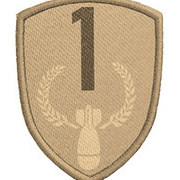
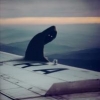

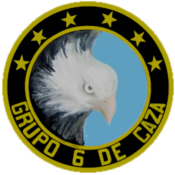
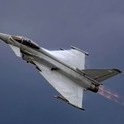

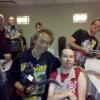
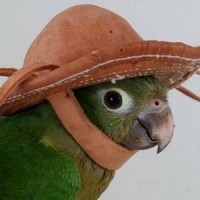

_(1)_(1)-transformed.thumb.jpeg.330ba6c5b99efa1ccfe29625250f7fb5.jpeg)


